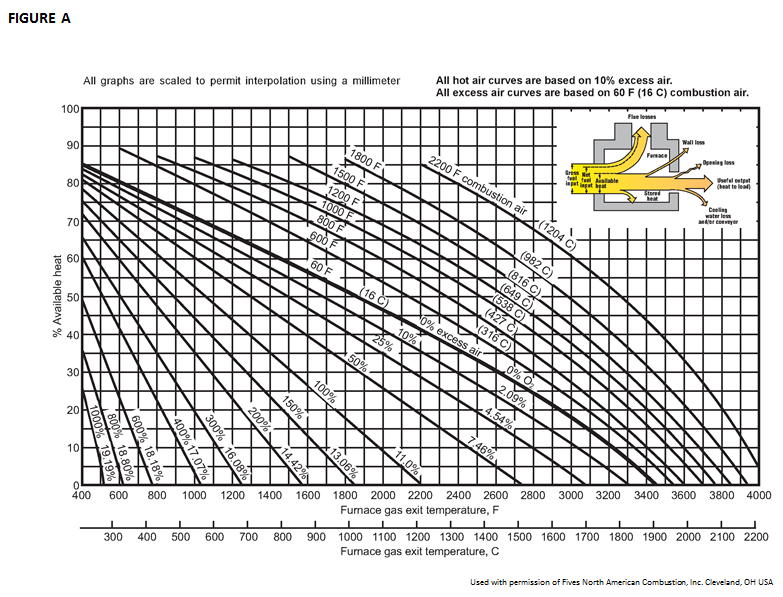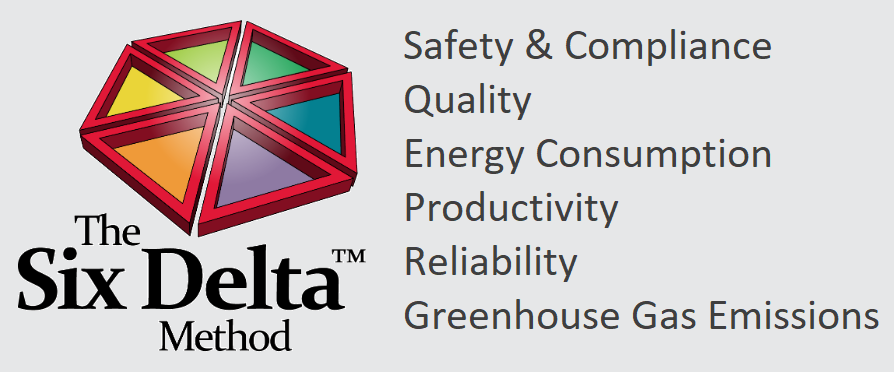After your company has done all it can to improve heat generation and contain that heat, there’s still an opportunity to increase energy efficiency. Even with a good air/fuel mixture, adequate insulation, and minimal openings into the furnace, maximum efficiency isn’t necessarily achieved.
Here’s an example: a furnace burning natural gas with 1,000° F air entering the burners, 2,200° F gases leaving the furnace, and only a very respectable 10% excess air will turn only 59% of the energy it produces into available heat. The remaining 41% is stack loss, some of which could be recovered (see Figure A).

The time to recover the cost of improvements may take longer for small furnaces, but as furnace size increases, so does the savings from reusing heat. A typical heat recovery rate for companies that undertake improvements is about 30%, which obviously can amount to substantial long-term energy cost savings. The recovered heat is often used in the combustion process itself, but it can be diverted to other uses.
What You Can Do
As with any improvement to combustion systems, the first step is measuring to find out the current furnace performance. When asked to assist, typical measurements we help our clients take are specific energy usage, operating temperature, and oxygen or excess air content. These measurements, which relate to the amount of wasted heat, allow for benchmarking against best-in-class companies and the competition. They also enable measurement of the financial impact of various improvement options.
This data creates a black-and-white case for whether improvements to recover lost heat are strategically justified. In most cases, the data reveals that improvements will result in considerable savings however, the only way to be sure is to measure. Once our clients know how much is at stake a dollar amount that often unpleasantly surprises them they can evaluate their options more astutely. The system improvements they can make include:
- Increasing the temperature of the combustion air. In the above example, with the 41% heat loss, the air entering the system had been pre-heated to 1,000° F. By increasing that temperature to 1,500°F an ideal temperature the stack loss would be reduced to 30%.
- Recovering heat by capturing it from hot water produced in the process.
- Recovering heat from steam produced in the process.
- Converting waste heat into electricity.
- In cases where steel is hardened in one furnace, quenched in a liquid to freeze the structure, and then placed in a second furnace to improve properties such as malleability, heat exhaust from the first furnace can be used by the second furnace.
These are but a few examples. You can recover heat in many innovative ways. However, you won’t be able to choose the best solutions until you gauge where you are now in terms of waste loss. Do you know how much heat you could be recovering but aren’t? If you don’t, finding out the answer could be an eye-opening experience. Fortunately, the information gathered to determine the furnace’s current state can also be used to point the way toward sensible improvements that make the most of your heat.


